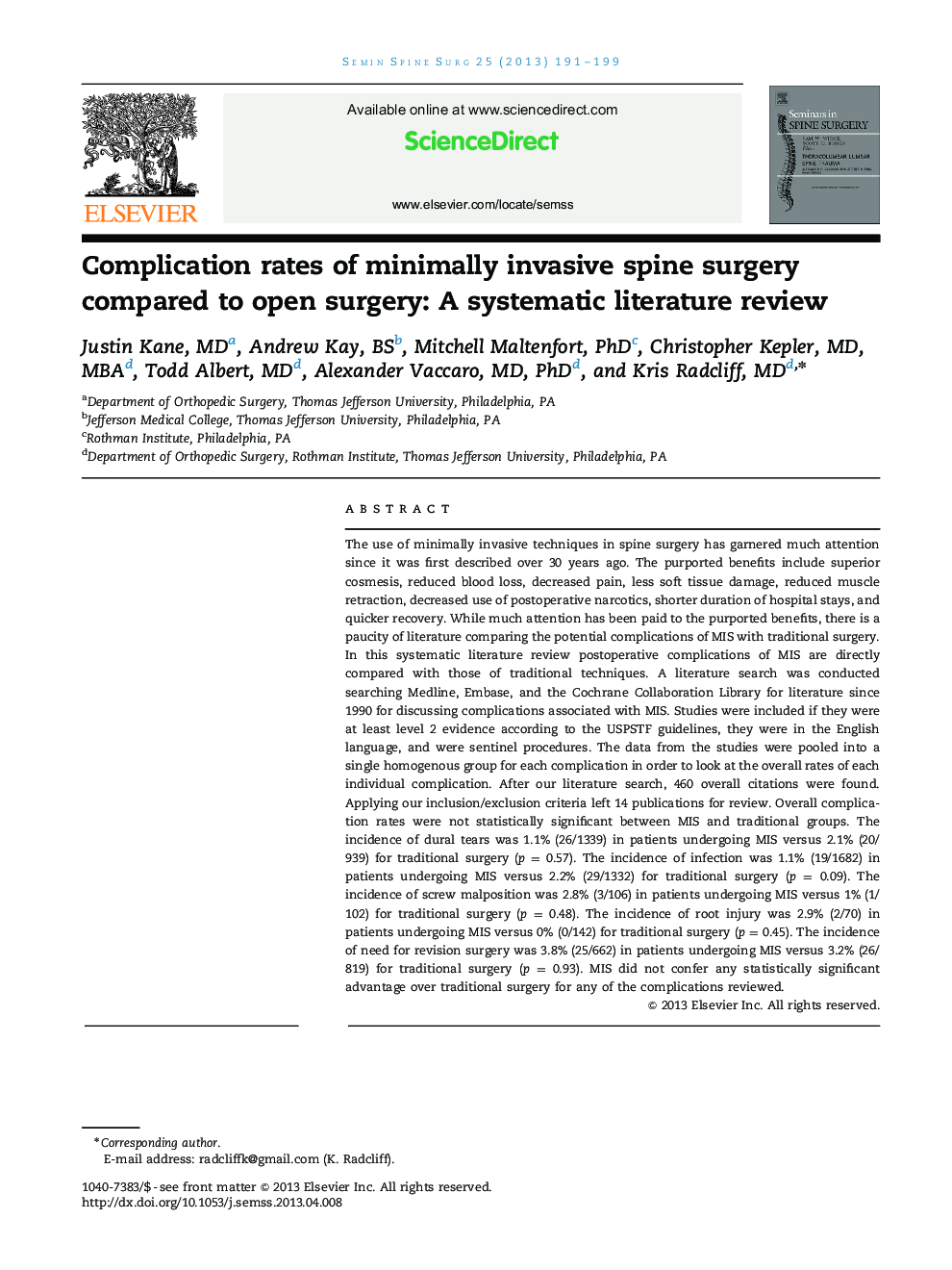| Article ID | Journal | Published Year | Pages | File Type |
|---|---|---|---|---|
| 4094720 | Seminars in Spine Surgery | 2013 | 9 Pages |
The use of minimally invasive techniques in spine surgery has garnered much attention since it was first described over 30 years ago. The purported benefits include superior cosmesis, reduced blood loss, decreased pain, less soft tissue damage, reduced muscle retraction, decreased use of postoperative narcotics, shorter duration of hospital stays, and quicker recovery. While much attention has been paid to the purported benefits, there is a paucity of literature comparing the potential complications of MIS with traditional surgery. In this systematic literature review postoperative complications of MIS are directly compared with those of traditional techniques. A literature search was conducted searching Medline, Embase, and the Cochrane Collaboration Library for literature since 1990 for discussing complications associated with MIS. Studies were included if they were at least level 2 evidence according to the USPSTF guidelines, they were in the English language, and were sentinel procedures. The data from the studies were pooled into a single homogenous group for each complication in order to look at the overall rates of each individual complication. After our literature search, 460 overall citations were found. Applying our inclusion/exclusion criteria left 14 publications for review. Overall complication rates were not statistically significant between MIS and traditional groups. The incidence of dural tears was 1.1% (26/1339) in patients undergoing MIS versus 2.1% (20/939) for traditional surgery (p = 0.57). The incidence of infection was 1.1% (19/1682) in patients undergoing MIS versus 2.2% (29/1332) for traditional surgery (p = 0.09). The incidence of screw malposition was 2.8% (3/106) in patients undergoing MIS versus 1% (1/102) for traditional surgery (p = 0.48). The incidence of root injury was 2.9% (2/70) in patients undergoing MIS versus 0% (0/142) for traditional surgery (p = 0.45). The incidence of need for revision surgery was 3.8% (25/662) in patients undergoing MIS versus 3.2% (26/819) for traditional surgery (p = 0.93). MIS did not confer any statistically significant advantage over traditional surgery for any of the complications reviewed.
